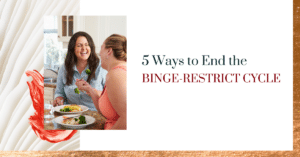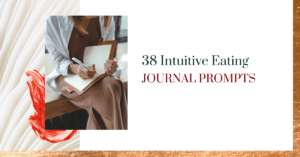How to Challenge All-or-Nothing Thinking
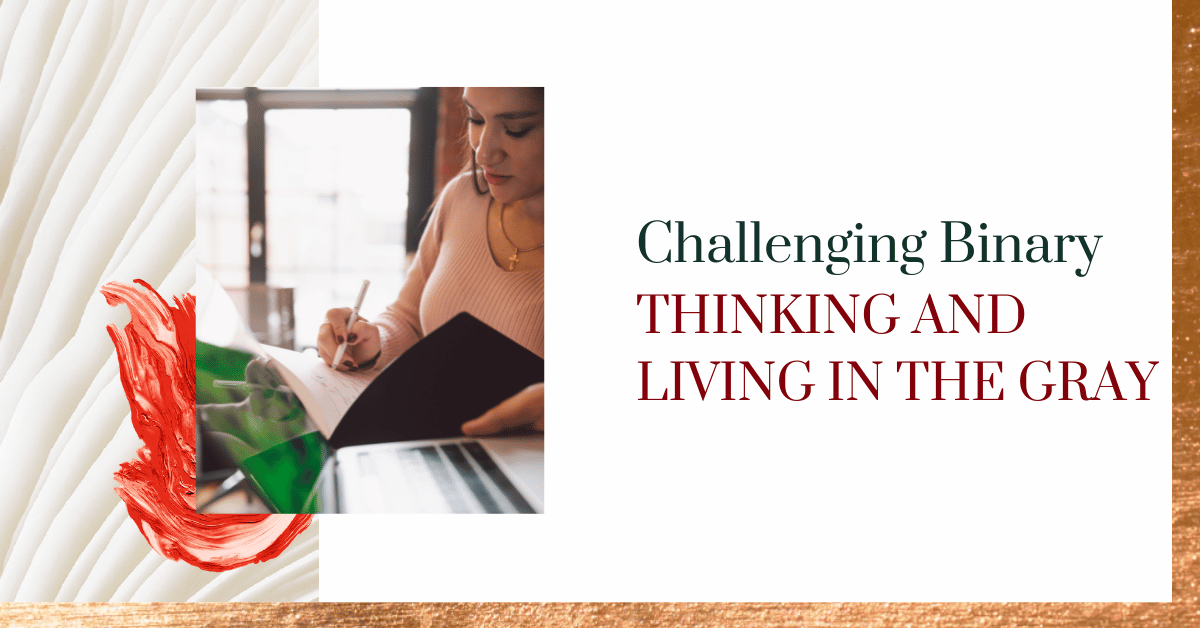
Part of unlearning diet culture involves challenging binary, all-or-nothing, thinking. Humans tend to live in the binary – good/bad, always/never, right/wrong – and diet culture plays right into that. But all-or-nothing thinking doesn’t allow space for growth, curiosity, or change. Read on to learn more about the problem with binary thinking and how to challenge the all-or-nothing thinking to find the gray area.
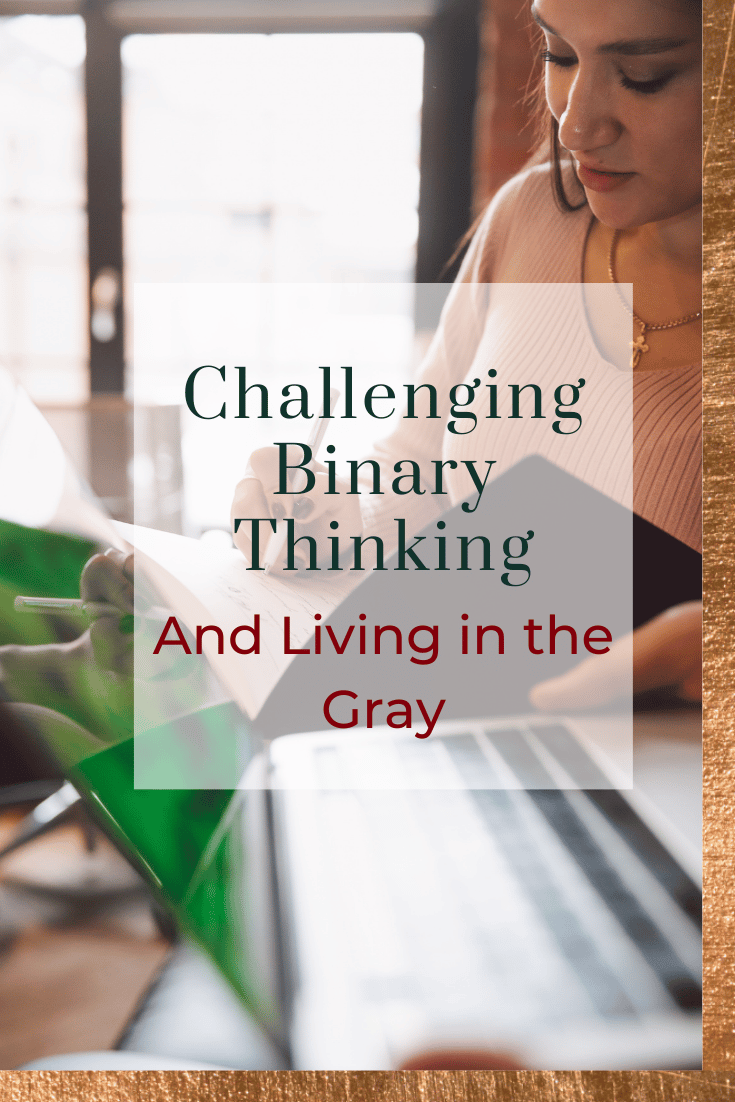
Humans really dislike ambiguity. The unknown can be anxiety-provoking (raising my hand over here!). While binary, all-or-nothing thinking can make life seem easier, it really restricts us and ends up forcing us into extremes. Things end up being “good” or “bad”, “right” or “wrong”…but what about the space in between?
The Problem with All-or-Nothing Thinking
We tend to simplify things into binary, absolute categories to help us feel more at ease: good/bad, either/or, right/wrong, always/never.
Diet culture thrives on this type of thinking. It can make us feel safe and calm to feel like we are doing something “good” or “right”. The implication “If you do this, everything will be okay” is part of the reason dieting behaviors feel safe, and moving away from them can feel scary.
This, however, is a false sense of security because life doesn’t happen in the binary. When we use this black-and-white, all-or-nothing thinking, it doesn’t allow space for flexibility, growth, and change. Instead, every eating occasion becomes something we have “passed” or “failed”.
The ways you talk about food and bodies affects your thoughts, emotions, and behaviors.
Using binary terms like good/bad, healthy/unhealthy, or clean/toxic, can cause a disconnect between body and mind. Instead of listening to your internal cues of hunger, satisfaction, and fullness, you end up reacting to labels placed on food or a certain body type.
For example, one of my clients noticed that when they ate something they considered “bad” or “junk,” they’d immediately feel like the day was blown. This caused them to think “screw it,” ignore their body’s feelings, and mindlessly eat whatever other “bad” foods they had around—because tomorrow they’d “start over.”
Labeling foods as “bad” or “unhealthy” can also lead to feelings of guilt and shame. These words assign moral value to food which can then affect a person’s self-worth. They may internalize their “bad” food choices and consider themselves “bad”, creating more shame and possibly leading to self-punishing behaviors (often using food).
Describing foods as “good” or “healthy” can also be problematic because people assume it’s better for them, which often leads to eating more of that food despite hunger levels or whether or not they actually enjoy that food.
For example, I had a client who would frequently binge-eat several protein bars or a few pints of one of the so-called “healthy” ice creams. She wasn’t physically hungry, but because she was dieting, she never felt satisfied. So she turned to these foods she thought were “good” and ended up bingeing on them (because they also were not satisfying).
Living in the Gray
Binary thinking is an all-or-nothing thing that sets you up for either success or failure, without space to reflect and learn. The scale goes down a few pounds; you’re “good.” It creeps up; you’re “bad.” When it’s always one or the other, there is no space to engage, reflect, learn, or grow.
Instead, if you can let go of judgment and sit with any uneasiness, fear, or anxiety that arises, another way emerges: the gray area.
I know, I know; everyone hates the gray area. But it is here where meaningful learning, growing, and changing occurs
The gray area allows for each life experience to be a learning opportunity instead of a pass or fail. This is the space in-between that brings together your mind and body, allowing you to explore and find a more balanced, inclusive relationship to food, your body, and with yourself.
Intuitive eating lives in the gray because it doesn’t just say eat only when you are hungry and stop when you’re full. That would be rigid, diet mentality. Instead, it’s okay to eat when you’re not physically hungry, because there are more types of hunger than just physical hunger.
Moving away from the binary enables you to explore and dig deeper, uncovering your beliefs about food and bodies. The gray area allows for nuance and flexibility to emerge.
Shifting Your Language
One way to start to embrace the gray and the nuance: shift your language.
Language is powerful. Just as it can be used to make us feel guilt, shame, or ‘less than’, it can also be used to help us grow. Below you’ll find two practices that you can use to start re-thinking the language you use and practice embracing the gray.
1. Change the word “but” to “and”.
Replacing the word “but” with “and” can have a profound impact on how you relate to food, your body, and even so many other things in life.
The word “but” is used to share an idea that is in contrast to the phrase that came before. For example, “I enjoyed that meal, but I wish I didn’t eat so much.”
While this may describe how you’re feeling, the second part of that statement invalidates the first part. It can bring in feelings of guilt for eating past comfortable fullness.
Now try using the word “and” instead. “I enjoyed that meal, and I wish I didn’t eat so much.” Both parts of the statement are true and one doesn’t negate the other.
Here are a few other examples:
- I feel pretty full, and I want to have one more cookie.
- I want to move my body, and I don’t have the energy for a jog today.
- I really enjoy cooking, and I’m not a fan of the clean-up.
Making this word change doesn’t make sense in every case – I’m not trying to completely rid our language of the word “but”. Reframing some thoughts and statements in this way can be helpful when you’re describing experiences. It can help you feel more authentic and less judgmental.
2. Use more neutral words to talk about food.
Make a list of all of the words that you use to describe or think about food. Then reflect:
- Which of these words have judgment attached?
- How do these terms affect you?
- What effect does it have on your behaviors? On your thoughts?
- Do you feel guiltier when you eat foods that you refer to as “bad” or “unhealthy”?
As you become more aware of how these words affect you, start to practice shifting your language to neutral, nonjudgmental terms.
More helpful words to describe food can include nourishing, delicious, comforting, fueling, fun, colorful, or satisfying. Or you may say, “I ate a lot of desserts this week, and I also had other foods, too.”
Remember, the day doesn’t magically reset at midnight (that’s another type of binary thinking). Remind yourself that all foods provide nutrients. Some foods have fewer ingredients; some have more. Some are less processed; some are more. Those qualities don’t make them “good” or “bad”; it just makes them food.
Taking the morality out of food allows you to separate your food choices from your self-worth and gives you space to learn, grow, and move in a more meaningful direction.
This blog contains edited excerpts of my new book, Unapologetic Eating: Make Peace with Food and Transform Your Life.
Looking for more support?
My team and I offer virtual one-on-one coaching and can help you get out of the all-or-nothing mindset, find the gray area, and make peace with food and your body – check out our nutrition coaching packages to learn more.
You can also check out my Unapologetic Eating 101 Course, an online, self-paced intuitive eating and body image program to liberate yourself from dieting and make peace with food and your body.
Author Bio
This article was written and reviewed by Alissa Rumsey, MS, RD, CSCS, a registered dietitian and Certified Intuitive Eating Counselor. She specializes in weight-inclusive care, intuitive eating, body image healing, mindfulness, self-compassion, and healing from chronic dieting, disordered eating, and eating disorders. Alissa holds a Bachelor’s Degree in Nutrition and Exercise Science, and a Master’s Degree in Health Communications, and is also an NSCA Certified Strength and Conditioning Specialist.
share the love
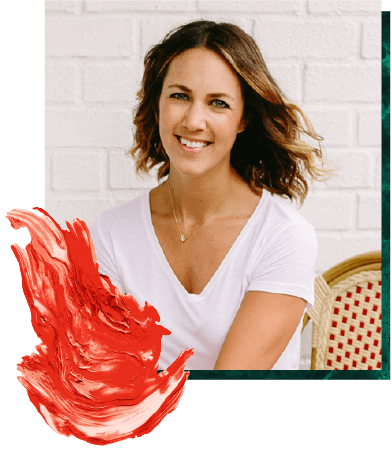
about
Alissa Rumsey, RD.
Alissa Rumsey, MS, RD, CDN, CSCS (pronouns she/her/hers) is a registered
dietitian, nutrition therapist, certified intuitive eating counselor, and the author of
Unapologetic Eating: Make Peace With Food and Transform Your Life. Alissa is
passionate about helping people reclaim the space to eat and live,
unapologetically.
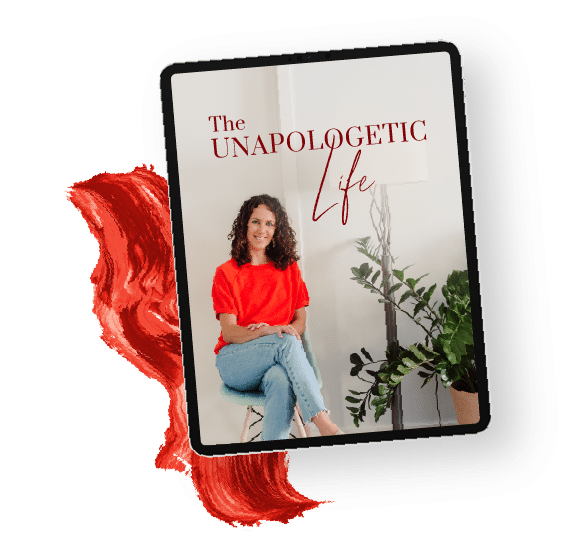
A twice-a-month round-up of inspirational stories, lessons, practical tips and encouragement for living your most authentic, unapologetic life.
The Unapologetic Life
RECENT POSTS
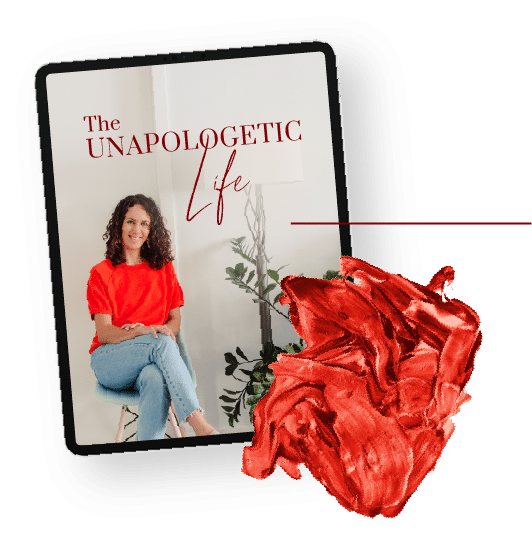
The Unapologetic Life
A twice-a-month round-up of inspirational stories, lessons, practical tips and encouragement for living your most authentic, unapologetic life.






